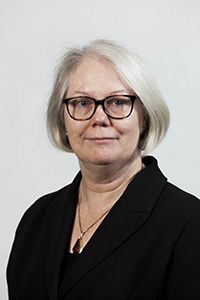Providing oral care at the end of life
A guest blog post by Dr Liisa Laakso, Principal Research Fellow, Allied Health and Hon Associate Professor, Mater, University of Queensland
A range of factors can contribute to comfort (or discomfort) and quality of the end-of-life experience. Dry mouth is one of those.
Dry mouth (xerostomia) can occur for a range of reasons including medicines, mouth breathing and oxygen therapy. At end of life, when oral intake lessens it can increase risk of dehydration, and the production of saliva decreases, giving rise to other issues such as mouth sores and oral thrush. This can cause distress, thus adequate assessment, regular review and management of hydration is important including discussion with the individual if able, or significant others when not possible. An individualized, ‘best interests’ decision can then be made based on factors such as the person’s level of consciousness, their previously stated wishes, and more specialized factors such as dysphagia (difficulty swallowing) and status of the swallowing reflex to avoid aspiration (inhaling food or fluid into the lungs). Speech Pathologist assessment is strongly recommended in such cases.
Offering oral fluids is the preferred option (rather than assisted artificial means of hydration) and this may include small sips of ice water or chips of ice, or encouragement to drink with a teaspoon, an appropriate beaker/flask or thickened fluids. Mouth care is vital including regular cleaning of teeth and/or dentures. Appropriate care of dry or cracked lips (cheilitis) could include using a thick ointment such as clear petroleum jelly to seal in water. A room humidifier may be useful for mouth breathers.
Care is needed with oral sponges and swabs as the heads may detach and become a choking hazard. A viable alternative may be a small headed toothbrush with soft bristles. The provision of mouth care in the last few weeks and days of end of life, particularly where the individual is no longer receiving assisted hydration, can be an excellent way to engage family and friends with care activities that offer comfort to all involved.
The NICE guidelines [1] recognize that there is “uncertainty whether giving clinically assisted hydration will prolong life or the dying process, and whether not giving clinically assisted hydration will hasten death.” Exemplary communication with palliative care practitioners will assist in determining what may be the best approach in each individual case.
Oral mucositis
Cancer therapy (either applied as curative or palliative treatment) can also cause xerostomia associated with oral mucositis. Oral mucositis (OM) is a common complication of radiation treatment and chemotherapy in people with head and neck cancer, and of chemo-radiotherapy in stem cell transplantation for haematological cancers. OM is characterised by pain, redness (inflammation) and ulceration of the mouth and throat. Pain with swallowing may result in the inability to eat properly or to eat enough. OM can be mild to severe, lasting for days and up to many months after cancer treatment thus it may present in people living in aged care settings.
Regular mouthwashes are the mainstay of treatment, as well as good fluid intake when OM is mild. For more severe cases, a bland soft diet is recommended (avoiding acidic, spicy, salty and vinegary foods, foods that are hot/cold, dry, rough or hard, and avoiding alcohol and tobacco). Sucking on ice may help. Painkillers and anti-inflammatory drugs may help reduce symptoms, and antibiotics may be needed to treat infectious complications.
Light (laser) therapy (known as photobiomodulation; PBM) is the use of low power medical light at specific wavelengths, to stimulate energy production in cells. PBM has been shown in clinical studies to prevent the severity of OM by limiting tissue breakdown, inflammation and pain, aiding recovery of the mouth and throat tissues. PBM is easily applied externally to the mouth region and neck, using a portable, handheld device. It can also benefit pain elsewhere in the body such as back pain, oedema and in supporting wound healing. Relatively inexpensive PBM devices can be purchased for use at home or in a residential care setting including aged care. Laser therapy for OM is supported by a guideline of the National Institute for Health and Care Excellence (NICE).[2] It is recommended that a trained practitioner (e.g., physiotherapist) initiates the treatment but continuing treatment can be self-applied by the patient or applied by a carer at home or in a residential care setting.
References
- NICE Guideline, No. 31. National Clinical Guideline Centre (UK). London: National Institute for Health and Care Excellence (NICE); 2015 Dec 16. Available at: https://www.nice.org.uk/guidance/ng31/chapter/recommendations#maintaining-hydration
- National Institute for Health and Care Excellence Interventional Procedures Program: Interventional procedure overview of low-level laser therapy for preventing or treating oral mucositis caused by radiotherapy or chemotherapy. Available at: https://www.nice.org.uk/guidance/ipg615/documents/interventional-procedure-consultation-document

Dr Liisa Laakso
Principal Research Fellow, Allied Health and Hon Associate Professor, Mater-UQ